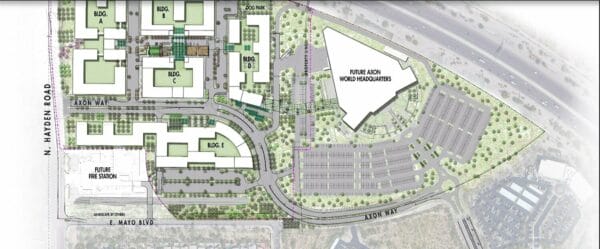
Disclosure: Rose Law Group represents a coalition of property and business owners throughout Pinal County who have worked to bring new transportation infrastructure to the county
Analysis of the appellate court’s upholding of Pinal road tax
By Jordan Rose and Johnathan Udall | Rose Law Group
Thursday’s decision by the Arizona Court of Appeals, upholding the Pinal Regional Transportation Authority and Proposition 417 tax to be valid found the original resolution did not affect the legality of the tax.
The authorizing measure only mentioned retail sales.
On that, the Department of Revenue [[DOR] took a somewhat neutral stance, while the question was primarily pressed by the plaintiffs, who challenged the tax’s legality. The court rejected the plaintiffs’ argument because the authorizing resolution neither enacted a tax nor did it ask voters to enact a tax, while the publicity pamphlet read “The particulars of the Prop 417 tax.”
The court, therefore found the authorizing resolution irrelevant and turned to examine whether the actual proposition complied with Arizona tax law.
On that point, the first question the court faced was whether the tax applied to all Translation Privilege Tax [TPT] classifications, as state law requires, or to just retailers.
Both the plaintiffs and DOR argued Prop 417 only taxed retailers. Their argument focused on one phrase in the Prop 417 pamphlet and ballot, which asked voters if they “favor the levy of a transportation excise (sales) tax including at a rate equal to one-half percent (0.5%)” on retailers.
The plaintiffs and DOR argued the word “including” limited the tax to retailers. The court disagreed. It reasoned “[t]here is nothing strained in [applying] the ordinary meaning of the word ‘including’ to signal that the description of the retail-sales component . . . was merely part of a non-exhaustive list of business classifications to which the proposed tax would apply.”
Further, the court noted that although state law required Pinal County to state the precise modified/variable rate it was imposing on retailers, state law did not require the county to set out the flat tax that applied to other TPT classifications. The court, therefore, concluded Prop 417 did not violate Arizona Revised Statutes § 42-6106(B)(1) as the plaintiffs and DOR argued.
Next, the court turned its attention to whether the tax on retailers represents a permissible “variable or modified rate,” and both the plaintiffs and DOR argued Prop 417 did not represent a permissible variable or modified tax rate. More specifically, they argued, “a county that chooses to enact an excise tax must impose the same tax rate on all income earned within any particular business classification.”
The decision to impose a zero percent rate upon retail sales of a single item of personal property over $10,000 effectively created an “impermissible tax classification.”
In other words, instead of the “retail” classification provided by state law, the plaintiffs and DOR essentially argued Pinal County created separate “high-dollar” and “low-dollar” retail classifications that effectively rewrote state law.
The court shot that argument down, noting the plaintiffs and DOR “cite no authority to support their assertion, and nothing in the plain language of [the state law] or [its] legislative history supports” limiting Pinal County’s power to enact the tax as it did.
Turning to the court’s own analysis, it noted the term “modified rate” is used nowhere else in the state’s tax code, so it looked to a dictionary to determine the phrase’s meaning. Because the dictionary definitions were broad, the court found the “modified rate” language allowed “almost any type of change to [a tax rate] but particularly one that, as here, lessens its burden upon the taxpayers.”
The court did not examine whether the tax was a “variable rate,” which state law also permits, because it found the tax constituted a permissible modified rate.
Finally, the court considered whether the tax violated the United States or Arizona Constitution. The plaintiffs, but not DOR, argued Prop 417’s modified rate “violates constitutional equal protection guarantees and constitutes an illegal special law.”
The court rejected both arguments. The questions came down to whether the modified rate met “the rational basis standard” or, in other words, “whether the challenged legislation has a legitimate purpose and . . . if it is reasonable to believe the classification will promote that purpose.”
The court sided with Pinal County, noting “without the tiered-rate structure, an Apache Junction resident in the market for a $500,000 motor home could avoid paying $2,500 in Pinal County TPT by driving a short distance to buy the same motor home in the Phoenix metropolitan area.” Because the tiered-rate tax met the rational basis standard, the court concluded it did not violate constitutional equal protection guarantees or represent an unconstitutional “special law.”
For all these reasons, the Arizona Court of Appeals unanimously reversed the tax court and found the Prop 417 tax valid.
The win for Pinal County does not necessarily mean the dispute is over. In the next thirty days, the plaintiffs and DOR will decide if they want to appeal the decision to the Arizona Supreme Court. The opinion’s unanimous character might weigh against a further appeal.
The plaintiffs, nevertheless, might take a shot at appeal.








